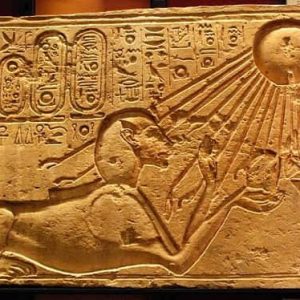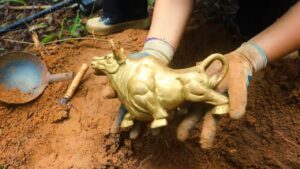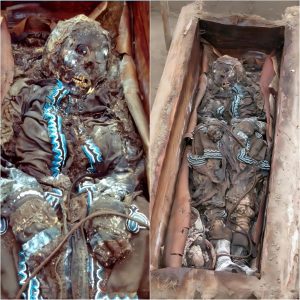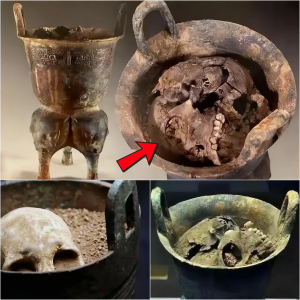The mummies of ancient Egypt are arguably the most famous mummies in the world. They are not, however, the oldest. The Chinchorros of South America began preserving their dead about 7,000 years ago and their mummies have become one of the wonders of Andean archaeology.
UNESCO has just recently recognized the cultural value and importance of the Chinchorro mummies by adding them to the World Heritage List. Chilean anthropologist and expert on the mummies, Bernardo Arriaza, explained the significance of this recognition, saying, “UNESCO is validating on an international level, through different experts, that the settlements and artificial mummification of the Chinchorro culture has exceptional value, that it has a global importance.”

The Chinchorro mummies have been added to the UNESCO World Heritage List. ( Servicio Nacional del Patrimonio Cultural )
The Chinchorro People
The Chinchorros were a people who inhabited the coast of the Atacama Desert in what’s now northern Chile and southern Peru between 7000 and 1500 BC. The people of this culture relied on fishing, hunting, and gathering for subsistence. While the earliest known Chinchorro sites date to 7000 BC, mummification, based on current evidence, dates to approximately 5000 BC. This means that the Chinchorro mummies pre-date the more famous Egyptian mummies by two millennia.
The Chinchorro mummies were first identified in 1917 by the German archaeologist, Max Uhle. Further excavations showed that such mummies were spread along the coast and concentrated between Arica and Camerones. It was in 1983, however, that the largest and best-preserved find of Chinchorro mummies was discovered. This discovery was made not by archaeologists, but by the Arica water company while laying a new pipeline near the foot of El Morro.
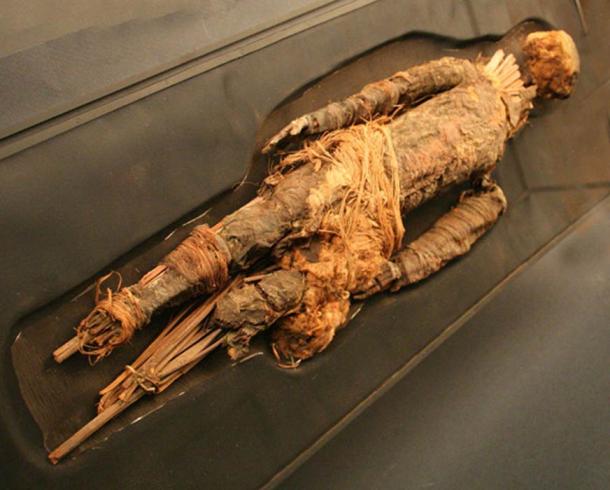
Chinchorro mummy at the Museo Chileno de Arte Precolombino. ( Museo Chileno de Arte Precolombino )
How were the Chinchorro Mummies Preserved?
While Uhle initially identified three categories of mummification, showing an increasing complexity over time, archaeologists have since expanded upon his explanation. Accordingly, the two most common methods used in Chinchorro mummification were the Black Mummy and the Red Mummy techniques.
The Black Mummy technique was used from about 5000 BC to 3000 BC. It involved dismemberment, in which the head, arms and legs of the dead were first removed. Then, the body was heat-dried, and the flesh was completely stripped from the bones. The skull was then cut in half, about eye level, in order to remove the brain.
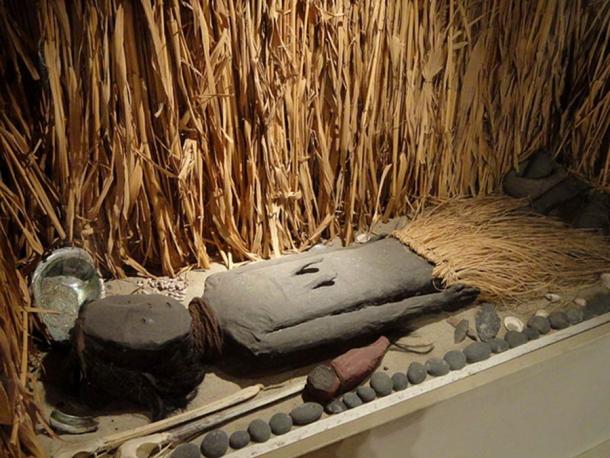
Chinchorro mummy created with the Black Mummy technique. ( CC0)
After drying the skull, it was packed with material and tied back together. The rest of the body was also put back together. To strengthen the limbs and spinal column, sticks were used under the skin. The body was also packed with materials such as clay and feathers. The skull was then reattached to the reassembled body. A white ash paste was used to cover the body and also to fill the gaps left by the reassembling process. Furthermore, this was used to fill out the person’s normal facial features.
The Red Mummy technique was used from about 2500 BC to 2000 BC. This was a completely different method compared to the Black Mummy technique, as the Chinchorros made incisions in the trunk and shoulders of the dead to remove the internal organs and dry the body cavity. To remove the brain, the head was cut off from the body.
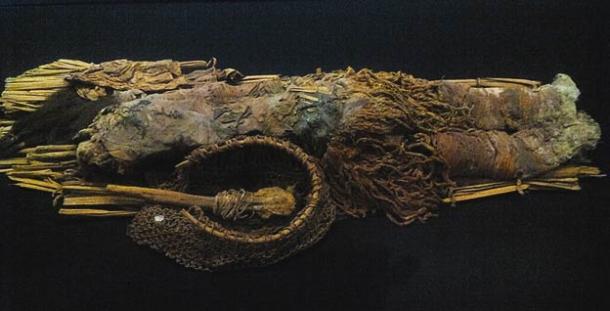
Infant remains preserved with the Red Mummy technique. (WeHaKa/ CC BY-SA 4.0 )
Like the Black Mummy technique, however, the body was stuffed with various materials in order to make it look more human-like. In addition, sticks were used to provide structural support. The incisions were then sewed up, and the head placed back on the body. A wig, made from tassels of human hair was placed on the head, and held in place by a ‘hat’ made out of black clay. Everything else, apart from this wig, and often the face, would then be painted with red ochre.
Arriaza, who is also the director of the Chinchorro Center at the Tarapaca University in the city of Arica, says that the mummification methods demonstrate that “These bodies are very finely made by specialists. There’s a subtlety, a creativity by these first populations.”

A Chinchorro mummy. ( Servicio Nacional del Patrimonio Cultural )
Why are the Chinchorro Mummies Important?
Apart from their age, the Chinchorro mummies are important because they appear to reflect the spiritual beliefs of the ancient Chinchorro people. Although the exact reason why they mummified their dead is unknown, there have been theories put forward. Some scholars maintain that it was to preserve the remains of their loved ones for the afterlife, while another commonly accepted theory is that there was an ancestor cult of sorts, since there is evidence of both the bodies traveling with the groups and of them being placed in positions of honor during major rituals, as well as a delay in the final burial itself.
One of most impressive features of the Chinchorro mummies is the scale at which this practice was done. To date, more than 300 mummies have been found. Unlike the ancient Egyptians, who primarily reserved mummification for royalty and the elite, the Chinchorro community accorded everyone, regardless of age or status, this sacred rite. The decision of egalitarian preservation is proven in the mummification of all members of society – men, women, the elderly, children, infants, and miscarried fetuses. In fact, it is often the case that children and babies received the most elaborate mummification treatments.
Arriaza suggests that the quantity of child mummies may be linked with high levels of arsenic poisoning in the water, which may have caused premature births, miscarriages, and high infant mortality rates. He has proposed that the mummification may have been “an emotional response from parents faced with these painful losses, so they painted them, dressed them up and every day this technique became more elaborate.”
Another possible explanation for this egalitarian funerary practice is climate change. As the Atacama Desert is one of the driest places on earth, corpses would have been preserved naturally. Moreover, as the Chinchorros buried their dead in shallow graves, it is likely that the bodies were partially exposed by winds. As the level of seawater increased around 6000 to 7000 years ago, the number of marine resources also increased, which in turn supported a larger population.
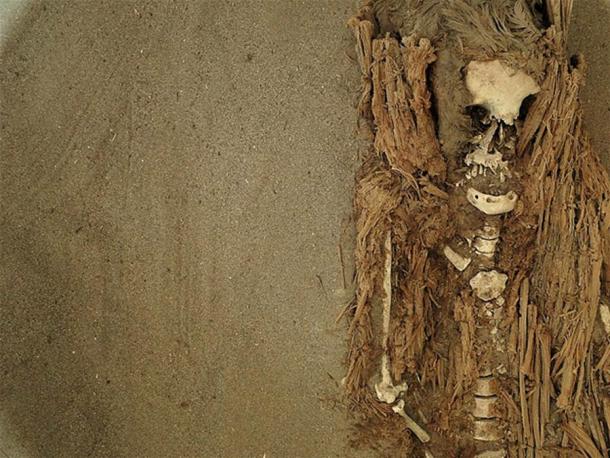
As the Chinchorros buried their dead in shallow graves, it is likely that the bodies were partially exposed by winds. (Luis Lobos Rivadeneira/ CC BY 3.0 )
As the group size increased, there would be a greater exchange of ideas, leading to more prosperity and cultural complexity, one of which would be the practice of mummification. Perhaps one of the most interesting aspects of the Chinchorros is that, based on the available evidence, it appears that social hierarchy was not developed, unlike other early civilizations.
How this culture managed to remain egalitarian for many millennia and function at a social level without hierarchy is something that has intrigued archaeologists and anthropologists for decades. Research into this aspect of their culture is ongoing.
